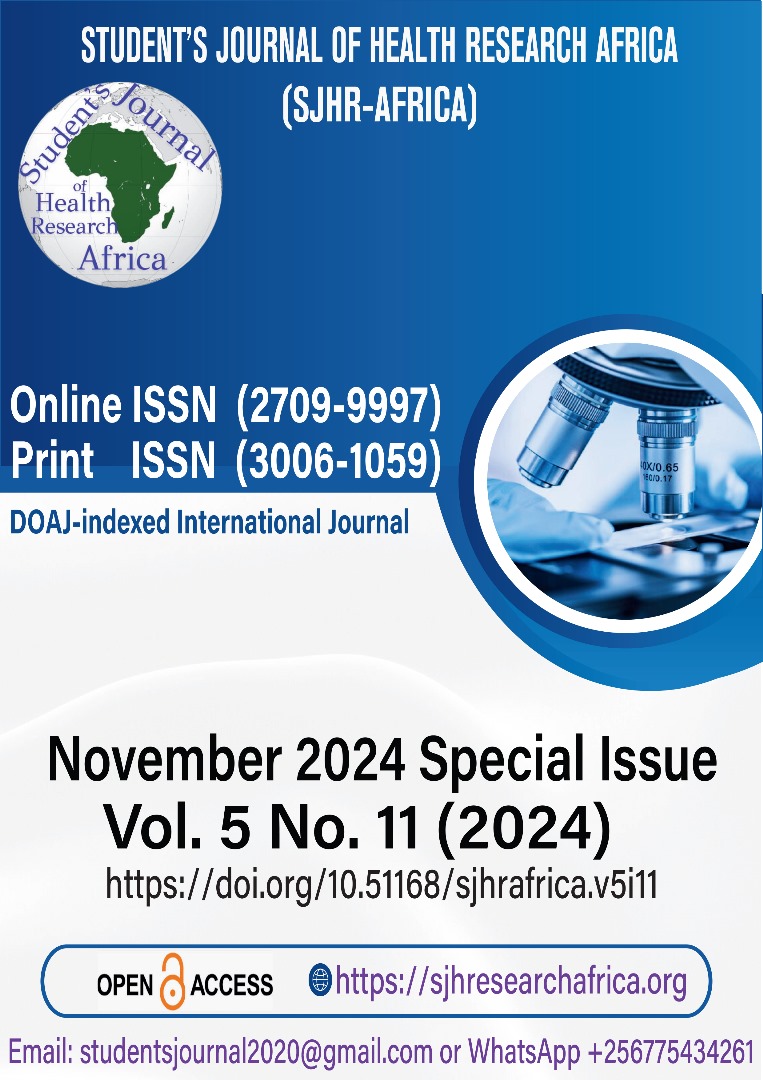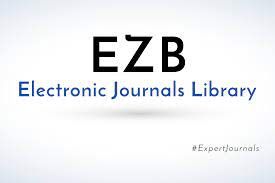Role of dual energy CT in differentiation of benign and malignant gall bladder disease: A histopathological correlation.
DOI:
https://doi.org/10.51168/sjhrafrica.v5i11.2135Keywords:
Dual energy computed tomography, Gall bladder malignancy, pericholecystic invasion, regional lymphadenopathy, post-image processingAbstract
Objective:
To evaluate the role of dual-energy CT (DECT) and contrast enhancement in differentiating benign from malignant gallbladder (GB) diseases.
Methods:
Ninety patients (21–70 years) with GB wall thickening >3 mm or GB mass on ultrasonography undergoing cholecystectomy were enrolled. CT was performed using a 384-slice Siemens SOMATOM Force dual-source DECT scanner. Non-ionic contrast (iopromide, Ultravist 370) was administered, and attenuation images were acquired at 80 and 140 kVp. Parameters assessed included wall thickening and its pattern, presence and extent of polypoidal mass, iodine uptake in GB wall and pericholecystic liver parenchyma, attenuation pattern, pericholecystic invasion, and lymphadenopathy. DECT diagnoses were made by consensus of two radiologists. Histopathological examination (HPE) served as the reference standard. Data were analyzed using SPSS 21.0, with chi-square and independent t-tests applied. Diagnostic performance indices of DECT were calculated.
Results:
On HPE, 51 cases (56.7%) were benign and 39 (43.3%) malignant. Malignant cases had significantly higher mean age (51.13±11.80 years) than benign (41.18±10.01 years) (p<0.001). Most patients were female (71.1%) and from rural areas (63.3%). No significant association of clinicodemographic factors with HPE diagnosis was noted. On DECT, focal irregular wall thickening, mass replacing GB, increased iodine uptake in GB wall and pericholecystic liver, invasion, and lymphadenopathy were significantly linked to malignancy, whereas regular circumferential thickening suggested benignity. DECT diagnosed malignancy in 36 cases (40%) and benign disease in 54 (60%). Sensitivity, specificity, positive predictive value, negative predictive value, and accuracy of DECT were 79.5%, 90.2%, 86.1%, 85.2%, and 85.6%, respectively.Conclusion:
Dual-energy CT is a reliable tool for distinguishing malignant from benign GB diseases, with good diagnostic accuracy. Its wider application may improve early detection, though further exploration is warranted.
References
Mitake M, Nakazawa S, Naitoh Y, Kimoto E, Tsukamoto Y, Asai T, et al. Endoscopic ultrasonography in the diagnosis of the extent of gallbladder carcinoma. Gastrointestinal Endoscopy. 1990; 36(6): 562-566. https://doi.org/10.1016/S0016-5107(90)71164-9
Hirooka Y, Naitoh Y, Goto H, Ito A, Hayakawa S, Watanabe Y, et al. Contrast-enhanced endoscopic ultrasonography in gallbladder diseases. Gastrointestinal Endoscopy. 1998; 48(4): 406-410. https://doi.org/10.1016/S0016-5107(98)70012-4
Kim SJ, Lee JM, Lee JY, Kim SH, Han JK, Choi BI, Choi JY. Analysis of enhancement pattern of flat gallbladder wall thickening on MDCT to differentiate gallbladder cancer from cholecystitis. American Journal of Roentgenology. 2008; 191(3): 765-771. https://doi.org/10.2214/ajr.170.3.9490971. https://doi.org/10.2214/AJR.07.3331
Ratanaprasatporn L, Uyeda FW, Wortman FR, Richardson I, Sodickson AD. Multimodality Imaging, including Dual-Energy CT, in the Evaluation of Gallbladder Disease. RadioGraphics 2018; 38:75-89 https://doi.org/10.1148/rg.2018170076
Patkar S, Shinde RS, Kurunkar SR, Niyogi D, Shetty NS, Ramadwar M, Goel M. Radiological diagnosis alone risks overtreatment of benign disease in suspected gallbladder cancer: A word of caution in an era of radical surgery. Indian J Cancer 2017;54:681-4 https://doi.org/10.4103/ijc.IJC_516_17
Jindal G, Singhal S, Nagi B, Mittal A, Mittal S, Singhal R. Role of Multidetector Computed Tomography (MDCT) in Evaluation of Gallbladder Malignancy and its Pathological Correlation in an Indian Rural Center. Maedica (Buchar). 2018 Mar; 13(1): 55-60. https://doi.org/10.26574/maedica.2018.13.1.55
Srinivasan G, Sekar ASI. Study of the histopathological spectrum of the gall bladder in cholecystectomy specimens. Int J Res Med Sci. 2019 Feb;7(2):593-599. https://doi.org/10.18203/2320-6012.ijrms20190363
Beena D, Shetty J, Jose V. Histopathological Spectrum of Diseases in Gallbladder. National Journal of Laboratory Medicine 2017; 6(4): PO06-PO09.
Selvi T, Sinha P, Subramaniam PM, Konapur PG, Prabha CV.A clinicopathological study of cholecystitis with special reference to analysis of cholelithiasis. International Journal of Basic Medical Science 2011; 2(2):68-72.
Arathi N, Awasthi S, Kumar A. Pathological profile of cholecystectomies at a tertiary centre. Natl J Med Dent Res. 2013;2(1):28-38.
Goyal S, Singla S, Duhan A. Correlation between gallstones characteristics and gallbladder mucosal changes: A retrospective study of 313 patients. Clin Cancer Investig J. 2014;3:157-61. https://doi.org/10.4103/2278-0513.130215
Stinton LM, Myers RP, Shaffer EA. Epidemiology of gallstones. Gastroenterol Clin N Am. 2010;39(2):157-69. https://doi.org/10.1016/j.gtc.2010.02.003
Shaffer EA. Gallstone disease: epidemiology of gallbladder stone disease. Best Pract Res Clin Gastroenterol. 2006;20(6):981-96. https://doi.org/10.1016/j.bpg.2006.05.004
Lazcano-Ponce EC, Miquel JF, Muñoz N, et al. Epidemiology and molecular pathology of gallbladder cancer. CA: Cancer J Clin. 2001. 2001;51(6):349-364. https://doi.org/10.3322/canjclin.51.6.349
Albores-Saavedra J, Henson DH, Sobin LH. The WHO Histological Classification of Tumors of the Gallbladder and Extrahepatic Bile Ducts. Cancer. 1992 Jul 15;70(2):410-4. https://doi.org/10.1002/1097-0142(19920715)70:2<410::AID-CNCR2820700207>3.0.CO;2-R
Priya T, Kapoor VK, Krishnani N, Agrawal V, Agrawal S. Fragile histidine triad (FHIT) gene and its association with p53 expression in the progression of gall bladder cancer. Cancer Invest 2009;27:764-73. https://doi.org/10.1080/07357900802711304
Misra S, Chaturvedi A, Goel MM, Mehrotra R, Sharma ID, Srivastava AN, et al. Overexpression of p53 protein in gallbladder carcinoma in North India. Eur J Surg Oncol 2000;26:164-7. https://doi.org/10.1053/ejso.1999.0763
Levy AD, Murakata LA, Abbott RM et al. Benign Tumors and Tumorlike Lesions of the Gallbladder and Extrahepatic Bile Ducts: Radiologic-Pathologic Correlation. Radiographics 2002; 22: 387-413. https://doi.org/10.1148/radiographics.22.2.g02mr08387
Shuto R, Kiyosue H, Komatsu E, et al. CT and MR imaging findings of xanthogranulomatous cholecystitis: correlation with pathologic findings. Eur Radiol 2004;14(3):440-446. https://doi.org/10.1007/s00330-003-1931-7
Zimmerman A. Adenocarcinoma of the Gallbladder (Classical Gallbladder Cancer). Tumors and Tumor-Like Lesions of the Hepatobiliary Tract, 2016, Springer, Cham, pp. 1-21. https://doi.org/10.1007/978-3-319-26587-2_147-1
Lin HT, Liu GJ, Wu D, Lou JY. Metastasis of primary gallbladder carcinoma in the lymph node and liver. World J Gastroenterol. 2005; 11(5): 748-751. https://doi.org/10.3748/wjg.v11.i5.748
Al-Najami I, Lahaye MJ, Beets-Tan RGH, Baatrup G. Dual-energy CT can detect malignant lymph nodes in rectal cancer. Eur J Radiol. 2017 May;90:81-88. https://doi.org/10.1016/j.ejrad.2017.02.005
Yang Z, Zhang X, Fang M, Li G. Preoperative Diagnosis of Regional Lymph Node Metastasis of Colorectal Cancer With Quantitative Parameters From Dual-Energy CT. AJR 2019; 213(1).: W17-W25. https://doi.org/10.2214/AJR.18.20843
Zeng YR, Yang QH, Liu QY, et al. Dual energy computed tomography for detection of metastatic lymph nodes in patients with hepatocellular carcinoma. World J Gastroenterol. 2019;25(16):1986-1996. https://doi.org/10.3748/wjg.v25.i16.1986
Kalra N, Suri S, Gupta R, Natarajan SK, Khandelwal N, Wig JD, and Joshi K. MDCT in the Staging of Gallbladder Carcinoma. Hepatobiliary Imaging 2006; 186(3): 758-762. https://doi.org/10.2214/AJR.04.1342
Downloads
Published
How to Cite
Issue
Section
License
Copyright (c) 2025 Iffat Ali, Dr. Zahid Salim Ahmad, Anvisha Shukla, Md.Shamim Ahmad, Sachin Khanduri, Zeba Nahid

This work is licensed under a Creative Commons Attribution-NonCommercial-NoDerivatives 4.0 International License.






















